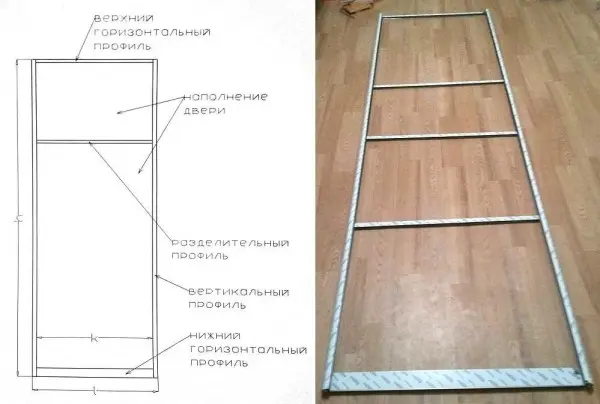Contents
The sliding wardrobe is convenient, as the doors in the open state do not take up much space. It can generally be made unframed – in a niche, from wall to wall. All that is needed in this case is to install doors for the wardrobe, and then assemble the filling (or vice versa, this is not so important.
Sliding wardrobe doors: recommended sizes
If we talk about strict restrictions on the size of doors for a wardrobe, then there are none. You can make any length and width. But there are recommended parameters based on operating experience:
- The minimum width is 50 cm. Nothing prevents you from making the canvas narrower, but when moving it will warp, as a result, it may even jump out of the guides.
- The maximum width of the sash is 110 cm. At the same time, you have to make considerable efforts in order to move it.
- The optimal width is 60-90 cm.
- Profiles come from the factory with a height of 5,5 m, and in stores they are usually cut in half. So there is a real opportunity to make doors for the wardrobe of the required height. With a high height, you only need to pay attention to the rigidity of the handle profile.
- The number of compartment doors is selected based on the optimal width. Choose them so that they do not block access to the filling of the cabinet.
Almost no size restrictions
Sash design
The door leaf of the sliding wardrobe consists of profiles:
- lower;

Lower profile has deeper sidewalls - top;

Upper profile for compartment door leaf - handle profile;

Handle can be on both sides - intermediate.

These profiles are placed between parts of the door leaf, but you can do without them – if the door is solid, not composite
All this together looks like in the photo. In this frame, in the grooves, your chosen material for the doors is inserted. It can be glass, mirror, chipboard and other materials.

Dividing profiles are optional. They are needed if you assemble the sashes from different materials or you just like them in this form. The maximum thickness of the filling material is 10 mm, the minimum is 4 mm. Thinner ones – glass, plastic, mirror – are inserted through the sealing gasket.
In order for the sash to move, rollers are installed on it – at the top and bottom. The entire mass of the door falls on the lower rollers, and the upper rollers stabilize the position of the leaf vertically, preventing it from deviating.
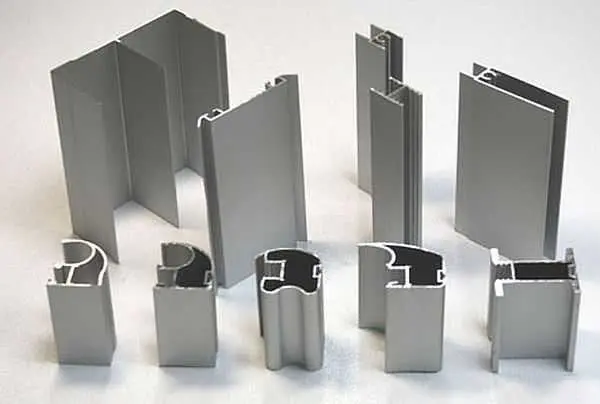
The rollers are attached to the side profiles using special fasteners.
Guides for compartment doors
As you understand, the sash is not everything. Guides are needed along which these same doors will move. There are two of them – upper and lower. In appearance, they differ significantly.


When installing the doors, they are first tightly inserted into the upper guide, the sash is raised to the stop and the lower rollers are placed in the corresponding slot. The whole structure is shown in the following photo.
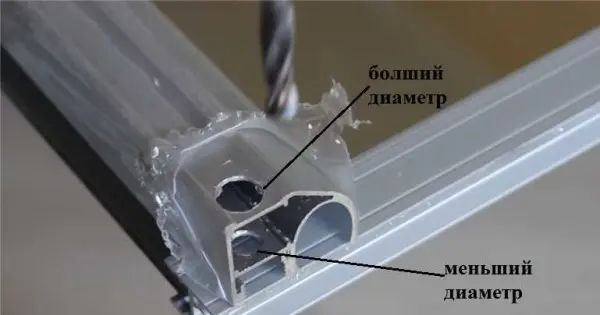
Size calculation
When self-assembling the door for the wardrobe, there are two options. The first is to measure the opening, think about how many doors you want to have and contact a door manufacturing company with this information. Just make sure they sell parts without assembly fees. The manager himself will calculate all the necessary materials for you, give you the dimensions and announce the amount. Everything is simple. But you will have to buy everything in this office, i.e. choose from what is available.
The second way is to calculate everything yourself and look for the necessary components from different companies. More difficult and more expensive, but the choice is wider. For those who do not like simple ways, we will describe the calculation of the components.
Sash
Calculate the width of the leaves so that only one handle is visible in the closed state, but at the same time it should not cover the door leaf itself. For a sliding door of two wings, consider this: measure the width of the opening, add the width of the profile and divide in half. This will be the width of the sash.
For example, the opening is 1600 mm, the width of the handle profile is 26 mm. We get 1600 mm + 23 mm / 2 = 811,5 mm. Please note that the width of the handle profile is taken arbitrarily. It can be different in shape and, of course, in width. When calculating, substitute the width of the design you have chosen.

To calculate the tricuspid, you will need to add twice the width of the profile and divide by 3.
Example: opening 2100 mm, handle width is the same – 26 mm. We consider: 2100 mm + 2 * 26 mm / 3 = 717 mm.
Everything is easier with height. 40-45 mm are subtracted from the height of the cabinet and the required sash height is obtained, as well as the length of the side profiles. With the size of the valves all.
Filling
Since the filling is in a frame of profiles, we subtract twice the width of the profile from the total width of the sash. We do the same with the height – subtract the height of the lower and upper profile.

So, the width of our sash is 811,5 mm. The measured width of the handle profile is 18 mm. Since the handles are placed on both sides, we double this figure. We get 36 mm. Total filling width 811,5 mm – 36 mm = 775,5 mm.
We also consider the height: let the original be 2350 mm, the width of the upper profile is 12 mm, the lower profile is 48 mm. Total filling height 2350 mm – 12 mm – 48 mm = 2290 mm. This is if the filling is solid and it is chipboard that does not require a silicone sealant. If the sash is a solid mirror or glass, the thickness of the sealing gum must be subtracted from the found height. It is 1 mm, but since it is worn around the perimeter, it takes 2 mm in general – above and below. In this case, the filling height is 2290 mm – 2 mm = 2288 mm.
If the sash filling consists of fragments, the thickness of the connecting profile is also subtracted. It is also about 1 mm.
Profiles
The height of the vertical frame profiles is equal to the overall height of the sash. The width of all horizontal ones is calculated depending on the width of the handle: we subtract twice the width of the handle from the width of the sash (there are two of them).

Let the width of the handle be 26 mm. We get the width of the vertical profiles: 811,5 mm – 26 mm * 2 = 759,2 mm.
Assembly photo report
First, all profiles are cut exactly according to the calculated dimensions. The accuracy must be perfect. The cut is strictly perpendicular, at 90 °. Holes are drilled in the handle profiles for the installation of rollers and fasteners.
Holes are made through two diameters. The exact size depends on the dimensions of the purchased fasteners, but basically there are two sizes: 4 mm and 6 mm, as well as 6 mm and 10 mm.

At the top, one such hole is made, the center of which is at a distance of 7 mm from the edge of the profile, at the bottom of the holes there are two – the first at a distance of 7 mm from the edge, the second – departing from the cut of the profile 42 mm.
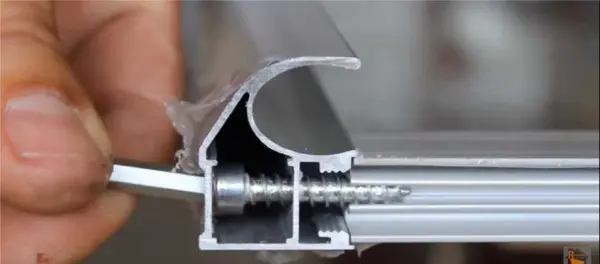
When assembling, first of all, all parts of the filling are assembled. First, if there is glass or a mirror, sealing rubber is installed around the perimeter. It is simply put on the end of the part by pressing a finger. At the edges, the sealant is cut off, put on end-to-end, but without overlap on the next side.
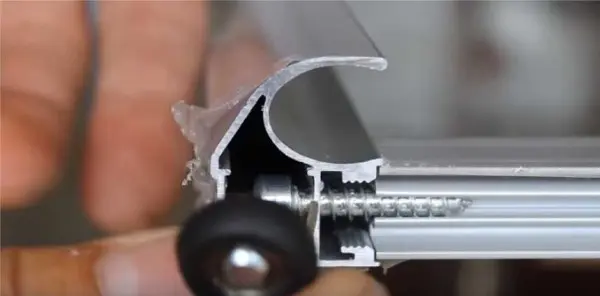
A protective film is glued to the rear of the mirrors. You can use regular stickers. This film will not allow the fragments to crumble if the mirror breaks.
If the sash is composite, we assemble it using connecting profiles. The filling parts are simply inserted with force into the profile. Sometimes considerable effort may be required. You can tap on the butt with the back of your hand or use a rubber mallet for this.

When the sash is assembled, according to the same principle, the corresponding profiles are installed at the top and bottom.
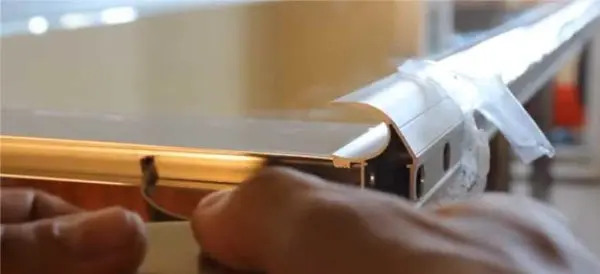
Then it’s time to install the side handle profiles. Everything is the same: drive the filling into the groove, make sure that it goes all the way along the entire length without distortions. When the frame is assembled, it is necessary to tighten it with fasteners. We start from the top. Take fasteners, insert into the previously drilled hole. If the distance was measured accurately, the screw falls into the groove of the upper cross member.
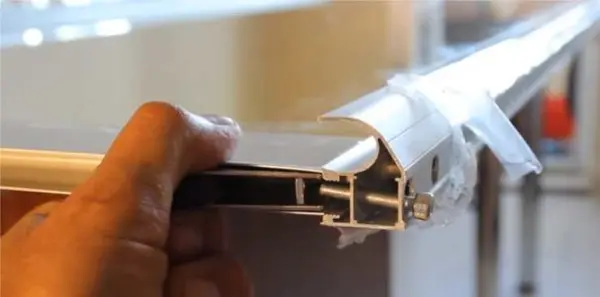
Tighten the connection with a hex wrench. Slightly not screwing up to the stop, we insert the upper rollers between the screw head and the profile jumper, then we tighten the screw.
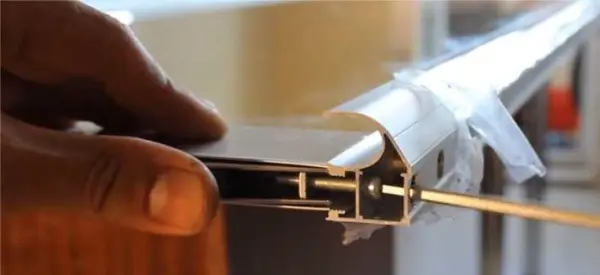
We repeat the same operation on the other side. Then we go down. Here the fastener is installed in the upper hole. We just tighten it up. Repeat the same on the other side.

Next, install the lower rollers. We put the thrust plate into the groove, press it.

We press the spring, tucking the roller body inward. We insert the screw into the hole, trying to get into the socket, tighten it with a hexagon. It may need a different size – slightly smaller than the others – as this screw is usually thinner and longer.

You don’t need to tighten it all the way. So that it goes into the plate half a centimeter or so. Then, when installing the door and adjusting its stroke, this screw adjusts the position of the sash – the corner rises or falls.

If you press the roller wheel, it will go into the body, then return due to the elasticity of the spring. This simple mechanism ensures the smooth running of the wardrobe door.
Having collected all the wings, we proceed to the installation of guides. They should be located strictly one under the other, even without deviations of a millimeter. Use a plumb line or a laser level (read how to use a laser level here).
First, screw the top guide. It is attached either to the ceiling or to the top of the cabinet. The distance from the shelves is at least 100 mm, otherwise the doors will touch the shelves, things, hangers.

We insert spring-breakers into the grooves from the sides into the lower guide. They will limit the movement of the door. The number of springs is equal to the number of wings, they are installed at both ends.

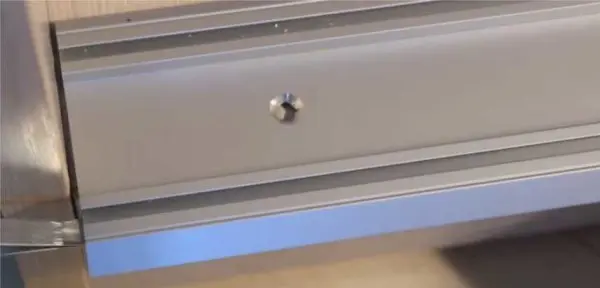
If there is no laser level, so as not to suffer with plumb lines, for starters, you can simply lay the lower guide until it is fixed. Then install one blade, bringing its upper rollers to the top, and setting the lower ones in the desired groove. Thus, the doors will connect the upper and lower guides.

By setting the canvas strictly vertically, you will automatically set the lower guide. It remains only to screw it on. Just be careful not to move the doors.
The last thing that remains to be done is to glue the shlegel on the sides. This is a fleecy self-adhesive strip that softens the impact of the sash on the walls of the cabinet (or just on the walls if the cabinet is unframed).

On this wardrobe doors are installed and ready to go. You can watch the process again in the video.










